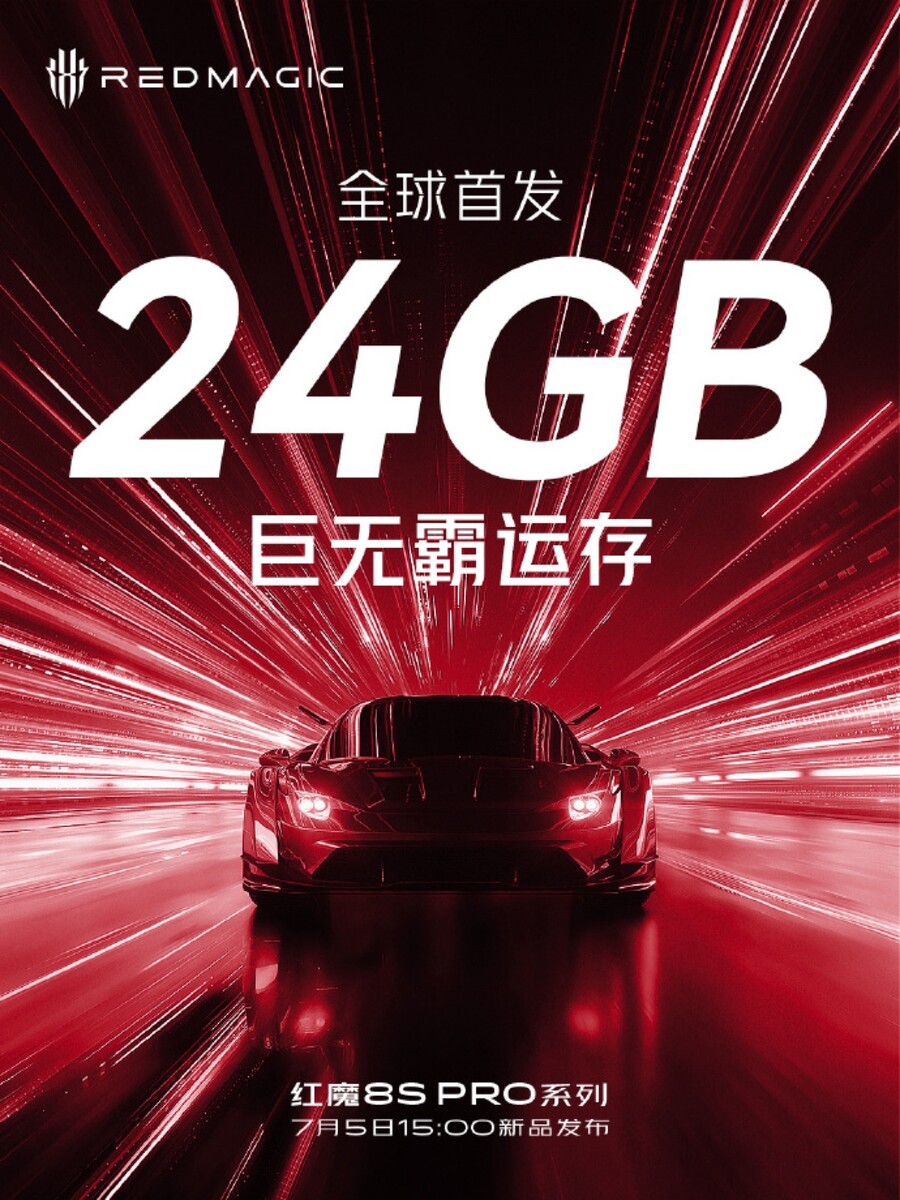24 GB of RAM! This smartphone sets a record… but for what purpose?
Where is the limit ? Android needs more RAM than iOS, it’s a well-established fact inherent in their respective architecture. But how far are we going in this gigabyte race?
An iPhone 14 Pro has, for example, 6 GB of RAM. Only 6 GB, we might say. By contrast, a newcomer to the Android market offers a smartphone equipped withan impressive total of 24 GB of RAM. This monster of technology, the RedMagic 8S Profocused on gaming, is powered by an overclocked version of the Qualcomm Snapdragon 8 Gen 2 processor, and is cooled by an active ventilation system.

It also sports a 120Hz AMOLED display and a 6,000mAh battery, capable of charging at 80 watts. The question is: is such an amount of RAM really useful in a smartphone?
Android and the race for RAM: how far will we go?
The answer to this question lies in how Android handles memory allocation to apps. To understand this, you need to know that Android is based on the Linux kernel and uses a similar strategy for managing system resources, including memory. When an application is launched on Android, it creates a new “process” which requires resources such as RAM. If RAM is available, the application gets all it needs without impacting the rest of the system.
But what if the available RAM is insufficient? Android starts with swap RAM pages to a special area of compressed RAM called ZRAM. It is not a hardware component, just a logical portion of RAM that has been isolated and contains compressed RAM pages. This data cannot be read directly, but must first be decompressed and loaded into the normal part of RAM. This is still faster than loading app data from the phone’s internal storage, however.
If ZRAM is also full, Android “kills” the oldest, unused processes to free up memory. Android app developers know this can happen, and as a result, apps are designed to periodically save their state to internal storage. This means that in theory you can pick up where you left off, even if the app was closed to free up memory. However, this comes with some performance penalty.
The more RAM an Android smartphone has, the more active apps it can keep in memory, and the smoother the transition between recent apps will be. Besides, Android also uses RAM for other tasks that are not directly related to apps. For example, during file transfers, RAM can be used as a cache to speed up the operation. In sum, Android uses as much RAM as needed to optimize overall system performance.
The fact that many Android apps run in the background also makes it useful to have more RAM, so these processes can run uninterrupted, even if a RAM-intensive app (such as PUBG or Diablo Immortal) is running. foreground use.
A ridiculous technological one-upmanship
Nevertheless, even taking these considerations into account, the usefulness of having 24 GB of RAM in a smartphone remains questionable. Beyond 12GB, it looks like we’re in for technological one-upmanship, where manufacturers are trying to lure consumers in with ever-bigger numbers, rather than focusing on real, tangible improvements in user experience. And at Frandroidwe don’t like it.
The Watt Else newsletter is THE unmissable Numerama event dedicated to the mobility of the future. Register here!
